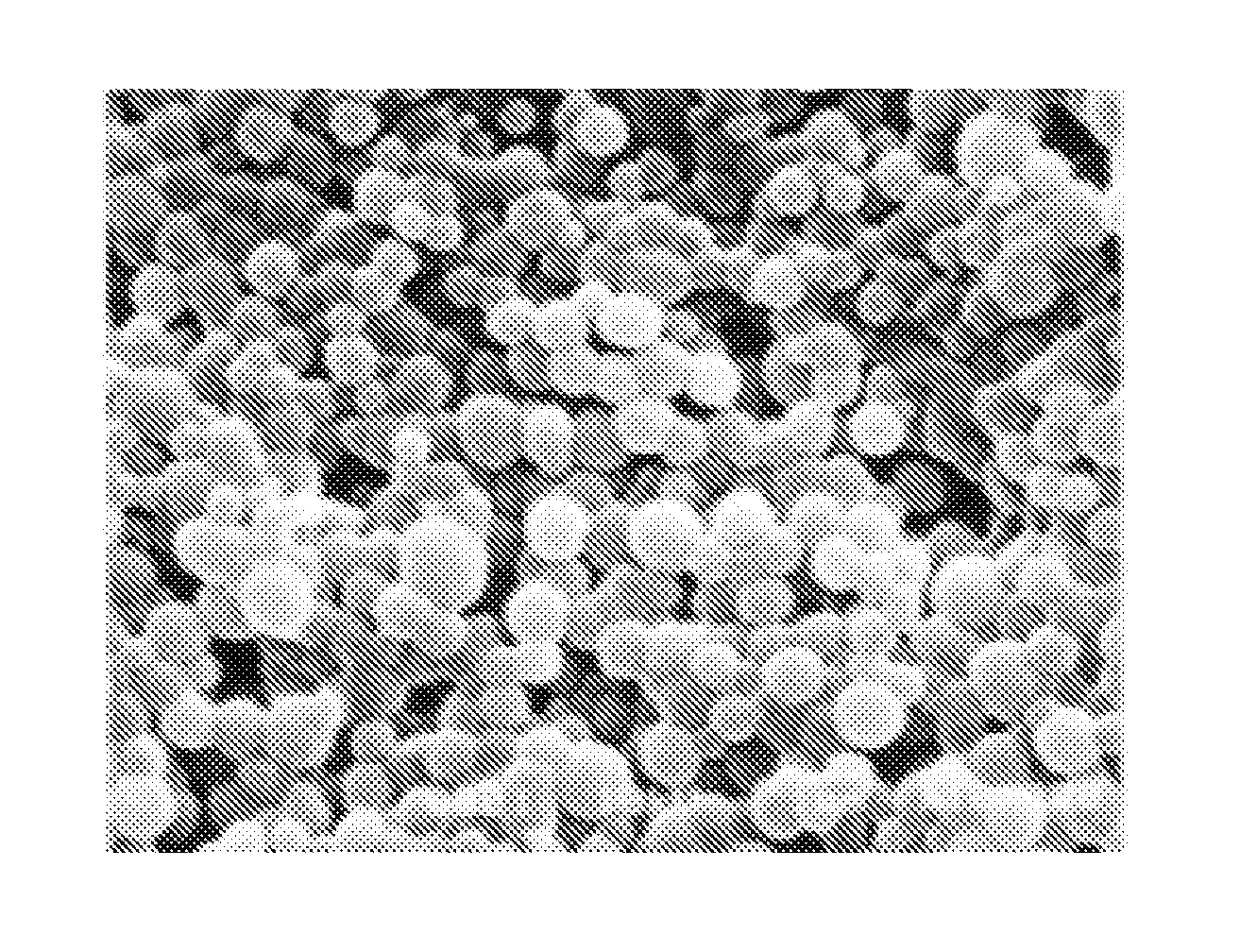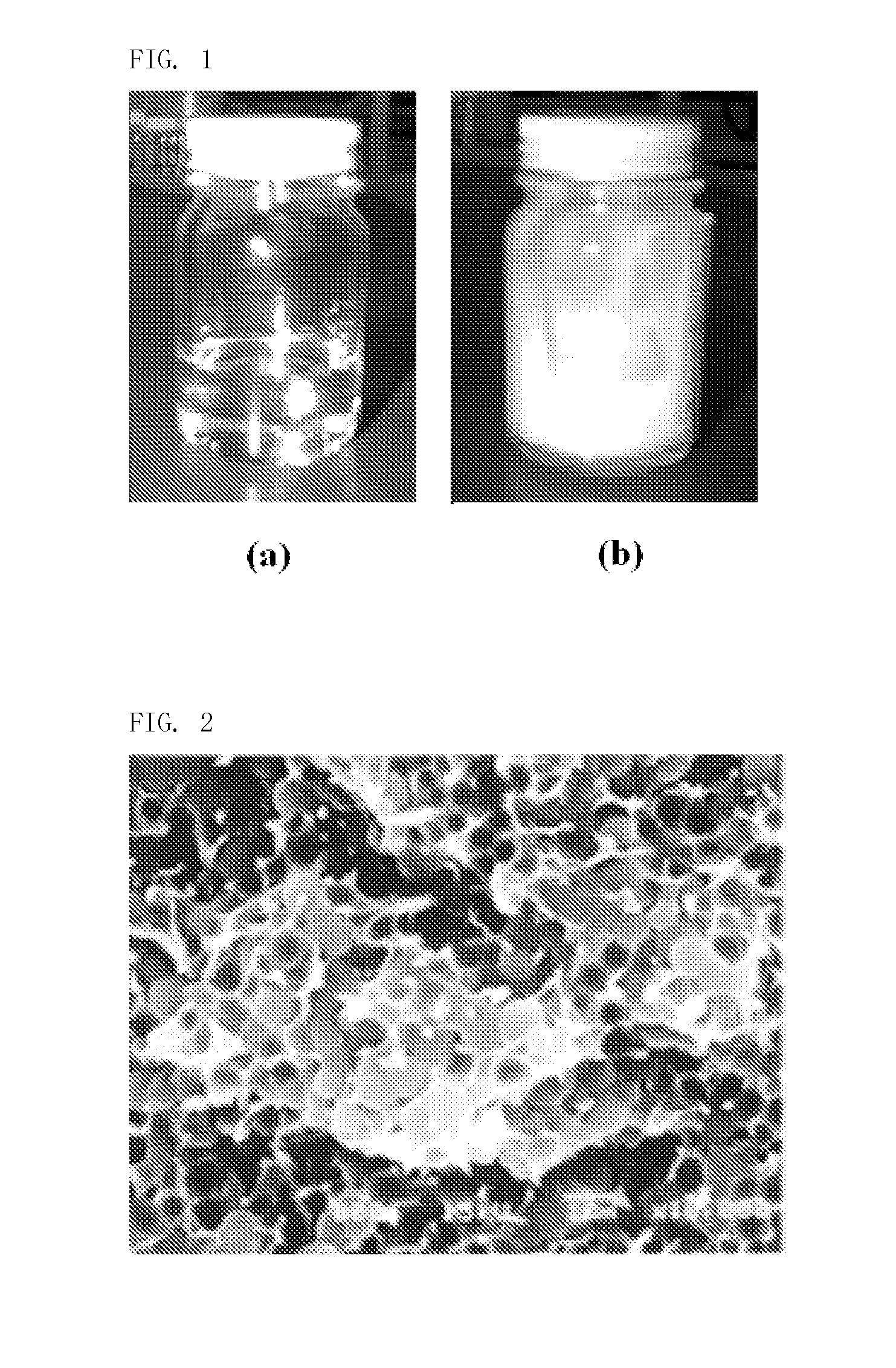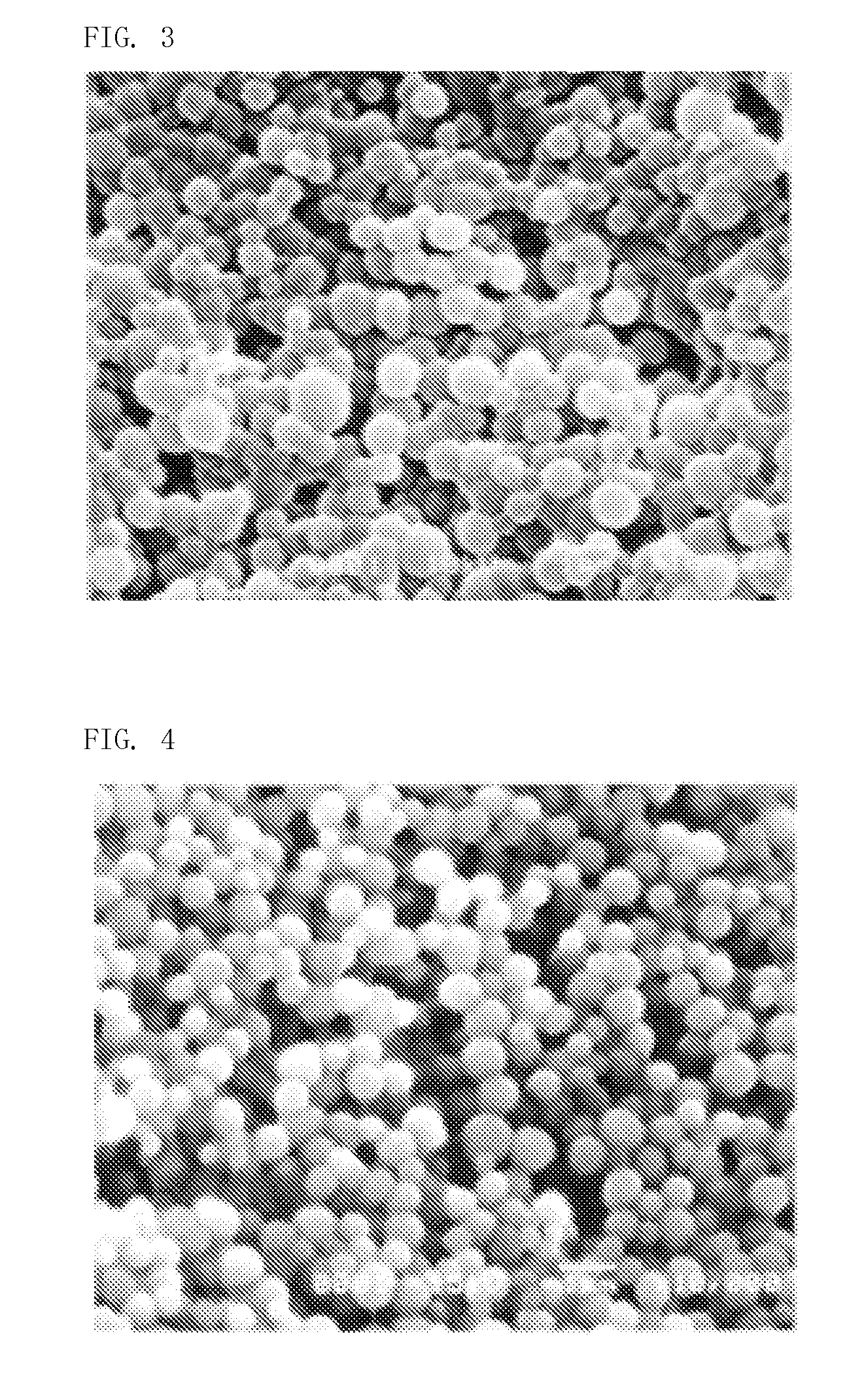Silicon-Containing Particle, Process For Producing The Same, Organic-Polymer Composition, Ceramic, And Process For Producing The Same
a technology of silicon-containing particles and process, which is applied in the field of process for producing silicon-containing particles, can solve the problems of loss of some inherent properties of original silicon-containing particles, loss of heat resistance, electrical characteristics, and inability to obtain super-fine spherical ceramic materials of good flowability and filling ability with the aforementioned known process, and achieves a small particle diameter , excellent ceramification, and high degree of ceramification
- Summary
- Abstract
- Description
- Claims
- Application Information
AI Technical Summary
Benefits of technology
Problems solved by technology
Method used
Image
Examples
example 1
Practical Example 1
[0132]A uniform solution was obtained by adding a curable silicone composition consisting of 5 g of a tetramethyltetravinyl cyclotetrasiloxane and 22.4 g of an organopolysiloxane represented by the following average formula:
(CH3)2HSiO[(C6H5)2SiO]2.5Si(CH3)2H
to a solution consisting of 30 g of polystyrene having a polymerization degree of about 2,000 and 20 g of toluene. The components were mixed. Following this, the obtained solution was combined with a platinum complex of 1,3-divinyltetramethyl disiloxane (used in such an amount that in terms of weight units the content of metallic platinum with respect to the weight of the aforementioned curable silicone composition is 20 ppm) added dropwise, and the components were stirred to a sufficient degree at room temperature. Following this, the curable silicone composition was cured to a sufficient degree by heating for 30 min in an oven at 110° C. As a result, a gel-like substance having white turbitidy was obtained. T...
example 2
Practical Example 2
[0136]A uniform solution was obtained by adding a curable silicone composition consisting of 2.3 g of a tetramethyltetravinyl cyclotetrasiloxane and 10.5 g of an organopolysiloxane represented by the following average formula:
(CH3)2HSiO[(C6H5)2SiO]2.5Si(CH3)2H
to a solution consisting of 30 g of polystyrene having a polymerization degree of about 2,000 and 20 g of toluene. The components were mixed. Following this, the obtained solution was combined with a platinum complex of 1,3-divinyltetramethyl disiloxane (used in such an amount that in terms of weight units the content of metallic platinum with respect to the weight of the aforementioned curable silicone composition is 20 ppm) added dropwise, and the components were stirred to a sufficient degree at room temperature. Following this, the curable silicone composition was cured to a sufficient degree by heating for 30 min in an oven at 110° C. As a result, a gel-like substance having white turbitidy was obtained....
example 3
Practical Example 3
[0138]A uniform solution was obtained by adding a curable silicone composition consisting of 24 g of an organopolysiloxane represented by the following average unit formula:
{(CH2═CH)(CH3)2SiO1 / 2}0.25(C6H5SiO3 / 2)0.75,
2.4 g of an organopolysiloxane represented by the following formula:
(CH3)2HSiO[(CH6H5)2SiO]Si(CH3)2H, and
2.4 g of an organopolysiloxane represented by the following formula:
C6H5Si{OSi(CH3)2H}3
to a solution consisting of 2.4 g of polystyrene having a polymerization degree of about 2,000 and 3.0 g of toluene. The components were mixed. Following this, the obtained solution was mixed with 0.01 g of a platinum complex of 1,3-divinyltetramethyl disiloxane and 0.1 g of a methyl tris(1,1-dimethyl-2-propynoxy)silane, and the components were stirred to a sufficient degree at room temperature. Following this, the curable silicone composition was cured to a sufficient degree by heating for 30 min in an oven at 110° C. As a result, a gel-like substance having whi...
PUM
| Property | Measurement | Unit |
|---|---|---|
| diameter | aaaaa | aaaaa |
| weight ratio | aaaaa | aaaaa |
| resistance | aaaaa | aaaaa |
Abstract
Description
Claims
Application Information
 Login to View More
Login to View More - R&D
- Intellectual Property
- Life Sciences
- Materials
- Tech Scout
- Unparalleled Data Quality
- Higher Quality Content
- 60% Fewer Hallucinations
Browse by: Latest US Patents, China's latest patents, Technical Efficacy Thesaurus, Application Domain, Technology Topic, Popular Technical Reports.
© 2025 PatSnap. All rights reserved.Legal|Privacy policy|Modern Slavery Act Transparency Statement|Sitemap|About US| Contact US: help@patsnap.com



